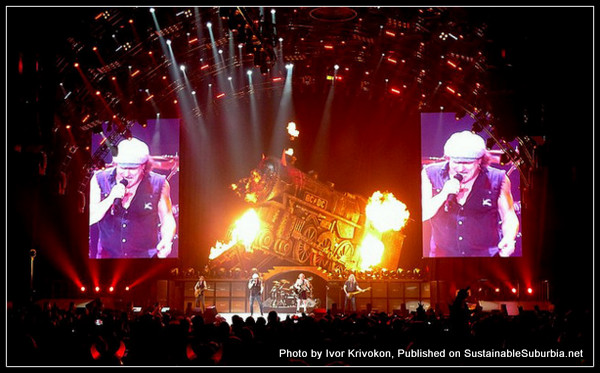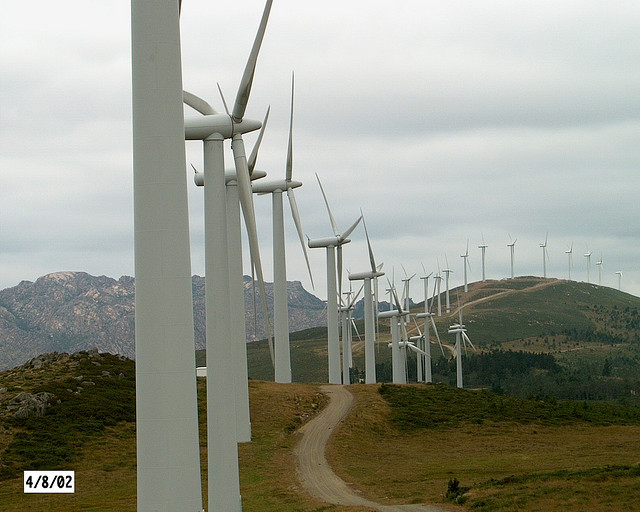
Nope, this article is not about the rock band. But, if you’ve heard of the band AC/DC, you know about the different types of electricity. There is AC, or alternating current, and DC, direct current. The difference in technology is largely technical. It’s the application of the technology that plays a part in our lives. As is the case with so many aspects of modern life, our electrical needs have changed since the original implementation.
In the early 20th century, when electricity started to flow from plants to modern homes, the biggest difficulty was distance. The ability to deliver electricity over long distances, then, took precedence over other concerns. That’s why Nikola Tesla’s AC power, which he developed for George Westinghouse, won the battle with Thomas Edison’s DC power. Simply put, companies could pump AC power to more remote locations. At the time there wasn’t much of a choice in the matter.
(If you’re interested in the technical differences between AC and DC power, PBS has an illustrative graphic that makes the basics clear.)
More than a century later, Edison’s energy has featured more prominently in our lives. You are, in fact, reading this very article on a DC-powered device. Whether it’s your computer, a smartphone, or a tablet, DC power flows through it. But at the same time we still have AC power flowing to our outlets. That necessitates a converter in the DC-powered device. If that sounds inefficient, that’s because it is.
The process of converting AC power to DC power involves a rectifier — or, more accurately, four rectifiers working together. With AC power electricity flows in both directions, as illustrated in the link above. The rectifiers block the half of the AC power and reverse it, thereby creating a direct flow. Yet a rectifier needs energy to operate, so it consumes some of the power flowing through. That is electricity drawn from the wall, but not delivered to the device.
Not only does DC power flow through our modern gadgets, but it also flows through and from many of what we’d call renewable energy sources. Solar panels produce DC power. One of the largest scale renewable energy projects, electric cars, run on DC-powered batteries. Essentially, if it requires a battery to operate, it runs on DC power. With portability and mobility featuring largely in modern times, the demand for DC power has clearly increased. And yet we still pump AC through the power grid.
The problem, of course, is that electric companies can’t just flick on the DC switch. The power grid still runs on AC technology, and switching would be no small task. Additionally, our devices are already set up to convert AC power to DC. The breadth of change required makes it unlikely to happen quickly. If we are to see a modern change to the more efficient and compatible DC power, it will likely be over the long haul.
Some companies are taking steps in this direction. The above-linked company, ABB, has worked with DC power in a number of ways. Among the more prominent is the construction of a DC-powered data center. For those unfamiliar, data centers essentially power the internet. ABB reports greater efficiency and reliability at their DC data centers. If more data centers make the conversion, we could see the first step towards a more efficient DC grid.
An optimistic sign: Apple, perhaps the world’s most iconic company, is constructing a solar-powered data center in North Carolina. Since solar panels pump DC power, it appears they are also moving in a more efficient direction. That is, they’re generating DC power with the solar panels, which they use to directly power servers and other equipment. If only the rest of the grid were this efficient.
As consumers we can do little about modern power grid inefficiencies. Our power grids were built at a time when distance mattered far more than efficiency. But as times have changed it has become more difficult to change. Gradual adaptation seems to be the approach to this complex matter. Yet every little movement is still important. If DC power will indeed fuel our renewable energy initiatives and take emphasis off fossil fuels, it will be well worth the effort.
Joe Pawlikowski is a tech-obsessed writer and editor. He first discovered DC power’s importance while researching the problem of short battery life in modern smartphones. In addition to writing about technology, he keeps a personal blog at joepawl.com/blog.
Photo of AC/DC by Ivor Krivokon
Healthy Family | Healthy World



